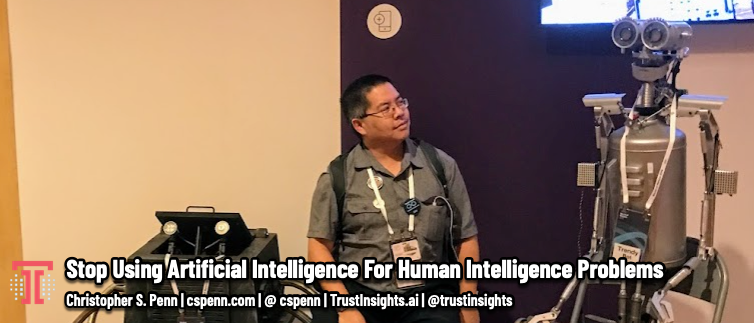
One of the most challenging concepts to understand in machine learning and AI is machines and humans don’t think in the same way. We make the general assumption that artificial intelligence and natural intelligence function in the same way, that machines are just faster, less expensive versions of ourselves.
In reality, our two intelligences are very, very different – and our understanding of those differences will make it easier or harder to successfully implement AI.
Human intelligence is based on massive parallel processing. Your brain is filled with trillions of brain cells, and all joking aside, is one of the most powerful computers in existence. But the way our brains compute is fundamentally different than our silicon offspring. Our brains actually process very slowly for the most part; the nerves, chemicals, and electrical impulses in our brains individually transmit very slowly but do so in vast quantities.
Silicon intelligence – machine intelligence – is today based on extremely fast serial processing. The largest computers have millions of processors available to them; your average laptop today has 4 or 8 processors. Those processors process information extremely quickly in binary format, turning everything into zeroes and ones.
Imagine you have a factory, and that factory makes widgets. There are two ways to increase productivity at the factory. You can have a few workers who are extremely fast at their jobs, or you can have thousands of workers who are individually slow but extremely fast as a collective. That’s the difference between machine and human processing capabilities.
Here’s why this matters: the kinds of problems you can solve with each type of intelligence are based on what that intelligence is good at. Computers? They can do math extremely fast, much faster than we can, because they have a few brain cells (comparatively) that are very, very fast. Math, statistics, probability, all kinds of computation – they are faster than we ever will be. But tasks that require massive parallel processing? Computers do those very slowly by comparison – and those are tasks like language, vision, hearing, etc.
In other words, our brains are best equipped to deal with the inputs they receive from our sensory apparatus – taste, touch, smell, sound, sight. That’s not news to anyone, but when we look at the kinds of problems we try to solve with AI, the closer a problem is to a problem human intelligence excels at, the more challenging the problem will be for AI. Vision, for example, requires MASSIVE parallel processing to be able to take in all the data that makes up sight, process it, and derive meaning from it – but our brains do it easily because we devote substantial numbers of brain cells to the task.
Conversely, the closer a problem is to what silicon intelligence excels at – computation – the more challenging the problem will be for a human. You probably can’t do fourth order derivative equations or multiple regression analysis in your head for complex problems, but machines can. Those kinds of problems are easy to distill down into zeroes and ones and crunch at insane speeds.
Which means, as you start thinking about the implementation of AI, break down your business challenges into components and then see which category each of those components falls into. For example, if you want to boost sales, you have an entire pipeline of components – how sales reps talk to customers. How your marketing is received by customers. How your lead scoring and CRM are managed. How you forecast demand.
Some of those components are well-suited to machines and shouldn’t be left in the hands of humans.
Some of those components are well-suited to humans and shouldn’t be left in the hands of machines.
This means that any company, product, or service which promises “all-inclusive” AI-powered software that will solve all your problems and be magic… won’t. By very definition, it’s going to be bad at some things, and good at others.
If you want to see fast wins from your AI efforts, focus on those tasks that computer intelligence excels at, and start your implementation there first – then move up to the tasks that computers find harder to do well.
You might also enjoy:
- You Ask, I Answer: AI Works And Copyright?
- Almost Timely News, January 7, 2024: Should You Buy a Custom GPT?
- Almost Timely News, February 11, 2024: How To Evaluate a Generative AI System
- Mind Readings: Generative AI and Addition vs Substitution of Jobs
- Almost Timely News, Febuary 18, 2024: From Comment to Content
Want to read more like this from Christopher Penn? Get updates here:
 Take my Generative AI for Marketers course! |


Leave a Reply